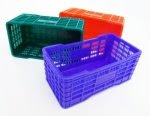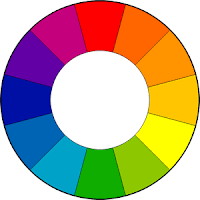At one time, I didn't think so. Our state (Missouri) required that not only could a ninth grader identify each phase AND tell you why it was called by its name, they ALSO had to know the position of the Earth, the Sun, and the Moon for EACH phase.
Yikes!
Then we hit on a couple of good techniques that could get the point across. Smooth sailing, ever since!
Here is a list of activities, sort of in the correct order, that you could pick and choose from, depending on what your state objectives are:
- Moon Phases Booklets. Introduce the phases and the definitions of waxing and waning, crescent, gibbous, etc. Usually, I would use a transparency of some sort, and the Moon Phases Booklet pages. I would have the students prepare all the pages, leaving blank the explanations. Then they would fill them in as I explained them all in order referring to the transparency. Because they have pages to fill out, they really listen. Make the explanations short and sweet. Use page two of the Flashcards and have the opposing page contain an explanation of each phases, including how they know it's crescent, etc. and how they know it's waxing or waning.
- Moon Phases PowerPoint. Use the Moon Phases PowerPoint immediately after the booklets are made. They go through their Booklets and double-check. I love giving kids many chances to get it totally correct! Boosts confidence before turning them in for points.
- Cut and Paste Moon Phases Activity. This is an active lesson where they are having to THINK about each phase and the position it possesses in the Earth/Sun/Moon system. Good thinking questions, too! Click here.
- Moon Phases Model Activity. Because our state requires them to know the positions during each phase, we added a great Models activity. These are the Models we purchased from Science Kit. They were expensive, but we had the money one year and purchased two kits, which gave us plenty to work with for small groups.
- Moon Phases Animation. Project at least one Internet animation. Click here for one from Harcourt.
- SmartBoard Activities. I haven't previewed this one because my SmartBoard App has expired on my home computer. Looks like it would be a decent one on Moon Phases. Email me if you like it or not!
- Moon Phases Worksheet. Use several over a week's time. Click here for one of mine. Click here for one from Enchanted Learning. Click here for another version.
- Moon Phases Flashcard Games. Can be a good pairs game by using their leftover unlabeled flashcards. (Only the labeled ones are used in the Booklet.) Have pairs mix up both their sets on the table top, pictures up. Call a phase out. They get to "grab" with pointing fingers only. Hold your card up after they "grab" and let them collect each one they get correct. Count cards at the end and shake hands with the winner! Great fun!
- Moon Charting Activity. Parents are especially impressed with this one. It's sometimes hard to get full participation for this one. But worth trying at least once. Click here.
- The US Naval Observatory is a gold mine of great moon data. Click here for the current moon.
- The Moon Connection also has some nice things about the Moon, including good calendars for each month. Click here.
- EarthSky website. Be sure to wander around this great website. They're the ones who do the wonderful one minute capsule on different radio stations. You can hear their podcasts in your classroom!
- YouTube Moon Phases Videos. Of course, you're gonna want to show a good YouTube video, especially when they are making their Moon Phases Booklet. This one is kewl!
NOTE: Main concept to be sure to teach: Moon Phases are NOT caused by the Earth's shadow moving across the face of the Moon! (Common misconception!) They are caused by the changing position of the Moon around the Earth.
THE TRICK: To teach relative positions: The Quarters are at 90 degrees. The crescents are each an acute angle near the new moon. The Gibbouses are each an obtuse angle near the full moon. The new and full moons are lined up on the 180 degree line. Simple for most kids, especially if you do a Models Activity!



























